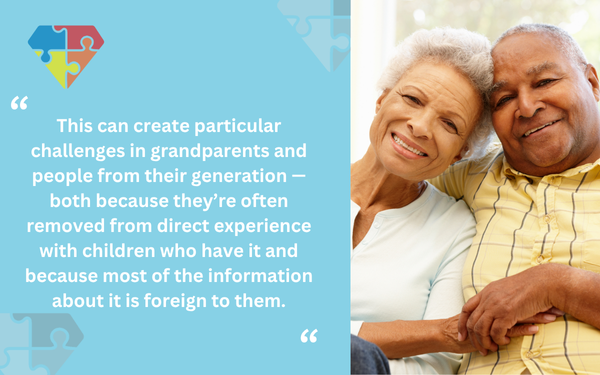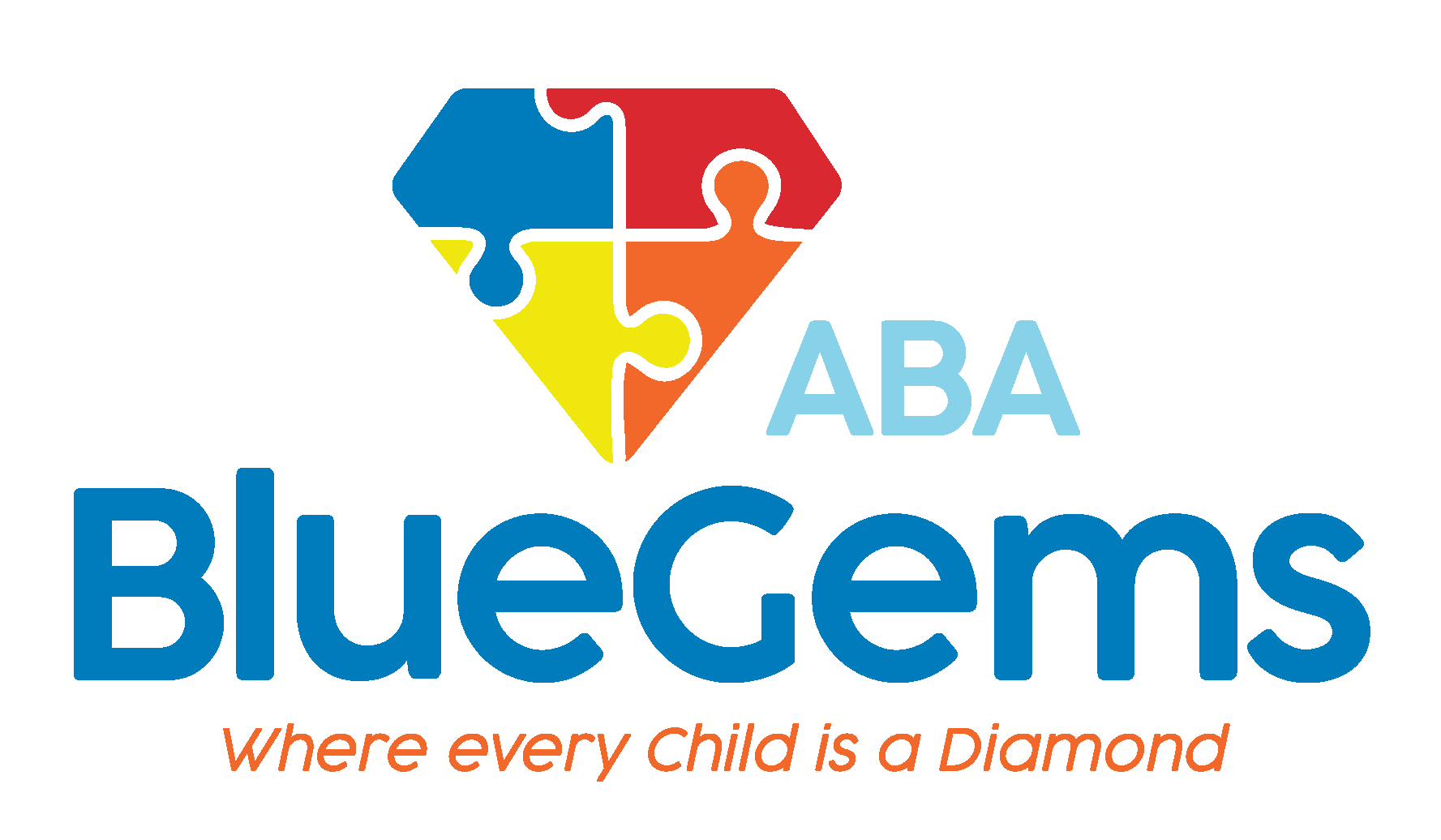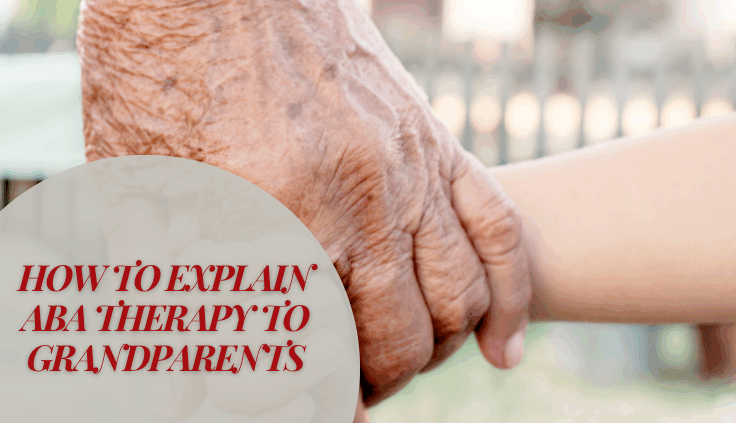How to Explain ABA Therapy to Grandparents
Family involvement is very important in applied behavior analysis (ABA therapy). In fact, it’s an essential component of ABA therapy, which is considered the gold standard of treatment options for children with autism spectrum disorder (ASD).
When parents, other family members, caregivers and other professionals are educated about and included in the process, they are able to help support the child in effective ways outside of ABA therapy sessions.
Doing so helps to reinforce the skills children learn during sessions, so that they are better able to generalize these skills. In other words, they’re able to take what they’ve learned in ABA therapy and apply it to real-world scenarios, which helps them live more independently.
It can be challenging to understand the ins and outs of ABA therapy, especially if the person isn’t directly involved in the child’s life on a day-to-day basis. Still, explaining ABA therapy to these important people in the child’s life is crucial to gaining understanding, acceptance and support.
In this article, we’ll discuss how you can explain ABA therapy to grandparents.
Table Of Contents
What Are Some Challenges of Explaining ABA Therapy to Grandparents?
Thanks to advanced scientific research, we know a lot more about autism today than we did even 20 years ago. Individuals with autism are generally more accepted today, and more people are at least familiar with what it is and how it affects people who have it.
That being said, there’s still a lot of confusion and stigmas surrounding ASD, especially for people who don’t have direct experience with it.
This can create particular challenges in grandparents and people from their generation — both because they’re often removed from direct experience with children who have it and because most of the information about it is foreign to them.

Generational differences alone can make it hard for them to understand autism and, as a result, ABA therapy. They might hold beliefs that are outdated or have misconceptions about ASD and how it’s treated.
It may be harder for grandparents to adapt to new behaviors and routines that they are unfamiliar with. As such, they may require additional guidance about how they can help support your child with autism.
Finally, they may be overwhelmed emotionally when they learn their grandchild has autism and needs ABA therapy. These emotions can range from uncertainty and confusion, to grief, sadness and anger.
Explaining ABA Therapy to Grandparents
Use this table to address common hurdles and offer clear, practical ways grandparents can understand and support ABA therapy at home.
| Common Challenge | How to Address It (Solution) |
|---|---|
| Limited familiarity with autism and ABA; lingering stigmas or outdated beliefs. | Start with the basics: ABA applies science of learning and behavior to build skills. Share a brief, plain‑language definition and emphasize it’s evidence‑based and widely used for children with ASD. Contrast old myths with today’s understanding. |
| Generational differences make new routines and expectations feel unfamiliar. | Explain the “why” behind routines (consistency supports learning and generalization). Offer a short routine checklist for visits (e.g., how to start activities, how to prompt, what to avoid). |
| Not being involved day‑to‑day, so progress and goals feel abstract. | Invite them to observe occasional sessions (when appropriate) or join caregiver trainings. Show simple data snapshots (what skill is targeted, how success is measured) to make progress concrete. |
| Feeling emotionally overwhelmed (uncertainty, confusion, grief, sadness, or anger). | Acknowledge emotions and set a supportive tone. Share wins (small successes) and next steps. Offer one or two actionable roles they can take so they feel helpful and included. |
| Unclear on what ABA strategies actually look like day‑to‑day. | Give quick examples: Task Analysis (break a task into steps), Visual Aids (use schedules/pictures), Role Play (practice safely), Positive Reinforcement (praise/rewards for target skills), and Data (track progress). |
| Concern that ABA is “one‑size‑fits‑all.” | Clarify personalization: goals and strategies are tailored to the child’s strengths, challenges, and preferences, and updated based on data and family input. |
| Unsure how to help outside sessions. | Provide 2–3 simple home supports: use the same visual cue, prompt the first step of a task, give specific praise (e.g., “Great job hanging up your coat!”). Ask the therapist for a short “grandparent cheat sheet.” |
| Worried about disrupting therapy when visiting. | Share visit‑ready tips: keep transitions predictable, match reinforcement rules parents are using, and follow the same prompting language the therapist models. |
| Difficulty seeing how skills generalize to real life. | Connect therapy to daily scenarios (mealtime, dressing, play). Explain that practicing skills across people and settings builds independence. |
| Needing a clear point of contact and ongoing support. | Encourage direct collaboration with the ABA team. Blue Gems ABA welcomes caregiver participation and can schedule teaching moments tailored for grandparents. |
Quick Talking Points
- ABA = structured, evidence‑based teaching to build meaningful, everyday skills.
- Strategies are personalized and adjusted using data.
- Family involvement helps children use skills in real‑world settings (generalization).
- Grandparents can help by using the same cues, routines, and positive reinforcement at home.
What Are Some Ways To Explain ABA Therapy to Grandparents?
The first step in explaining ABA therapy to grandparents is to discuss the basics — the principles, strategies and results.
Talk to them about how ABA therapy is rooted in scientific principles and evidence about learning and behavior. Discuss what some of the basic principles are and how they’ve proven to work for many children on the autism spectrum.
Next, discuss some of the strategies that ABA therapists use for your child. This could include …
- Task Analysis: Breaking down complicated tasks into smaller, more manageable steps
- Visual Aids: Providing visual supports along with verbal or written instructions since children with autism are visual thinkers
- Role Playing: Showing children how to exhibit target skills or behaviors by practicing scenarios in safe, controlled environments
- Positive reinforcement: Providing rewards to children for correctly exhibiting the skill or behavior to keep them engaged and motivated
- Data: Collecting and analyzing data to objectively assess the child’s progress toward goals
It’s also important to explain to grandparents how ABA therapy is a personalized and flexible treatment plan, and how the strategies your child’s therapist is using are based on the unique strengths, challenges and preferences of your child.
All of this can be very hard for anyone to wrap their heads around just by talking, though. A great way to get grandparents to understand ABA therapy and its impact is to have them directly involved in sessions from time to time, when appropriate.
ABA therapists can work with the entire family, in fact, so that others can see first-hand the challenges the child faces, the ABA strategies that are being implemented and some of the successes and growth that is seen through the work.
This can help grandparents better understand ABA therapy, which could help them better empathize with their grandchild and provide them with the best support possible.
Blue Gems ABA Believes in Including the Family in ABA Therapy
Grandparents may have a tougher time understanding ASD and ABA therapy, for many of the reasons described above. Still, following some of the tips we have provided can make it easier for them to learn about and participate in it.
At Blue Gems ABA, we believe fully in including family members, caregivers and others into the therapy process. This helps create better understanding, which can lead to better support for the child.
To learn more, please contact us today.




